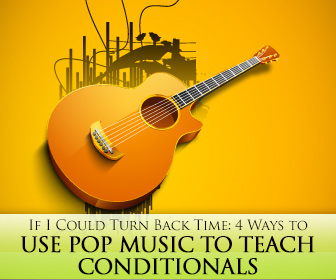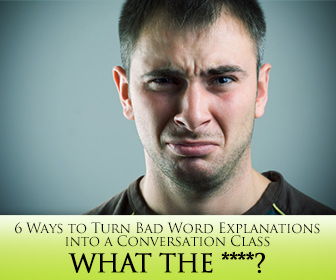If I Could Turn Back Time: 4 Ways to Use Pop Music to Teach Conditionals


Ignoring them might work for a while, but it is best to approach the subject professionally and offer an explanation for the word or phrase or question. Here are 6 ways to broach the slippery subject and even turn it into an interesting conversation class.

In English, especially in American English, we know it is a serious faux pox to use certain four letter words, even to the point where it is illegal in public media. They are powerful expletives though that attract attention, hence why we use them in common speech and why students want to know what they mean.
English speakers can be quite confrontational and get involved with nasty name calling either directly to someone in anger or behind someone’s back. These mean names are heard on TV, movies, songs, and on the street. Students will ask you what they mean. If they do, be prepared and explain that it is never nice to use these words, and would it not be better if we lived in a world where people only said nice things about others?
It will help them focus on positive aspects of colloquial language, and you will have a great conversation class the next week when they explain where they heard these words!
Pick a particularly vulgar word heavy dance song, better if it is one students know, and even better yet if it is one they hear on the radio often.
This activity will result in an engaging conversation and vocabulary lesson.
Show a clip from a popular “R” rated movie with bad language, like a gangster film, preferably one they have seen.
For your older teens or young adults, embrace the swear words and teach them how to use them properly in conversation. Write down commonly used swear expressions, like “what the hell” and “that pissed me off”, on papers with definitions on the back, and have students in pairs come to the front of the class and draw one each from a box. Ask them to try to use the phrases in a quick dialogue together. For example, they could say:
Students can work in pairs or groups to invent a dialogue at their desks first if you think they will need more time to consider the phrases.
Alternatively, embrace the swear or colloquial words by asking students to write down three that they hear on the street or in music/on TV for homework and to try to discover what they mean by asking other English speakers they know.
Now you can turn it around into a fun activity that engages their English learning skills and helps them practice conversation! The oral power that makes these words so popular can help energize your class and engage your students.